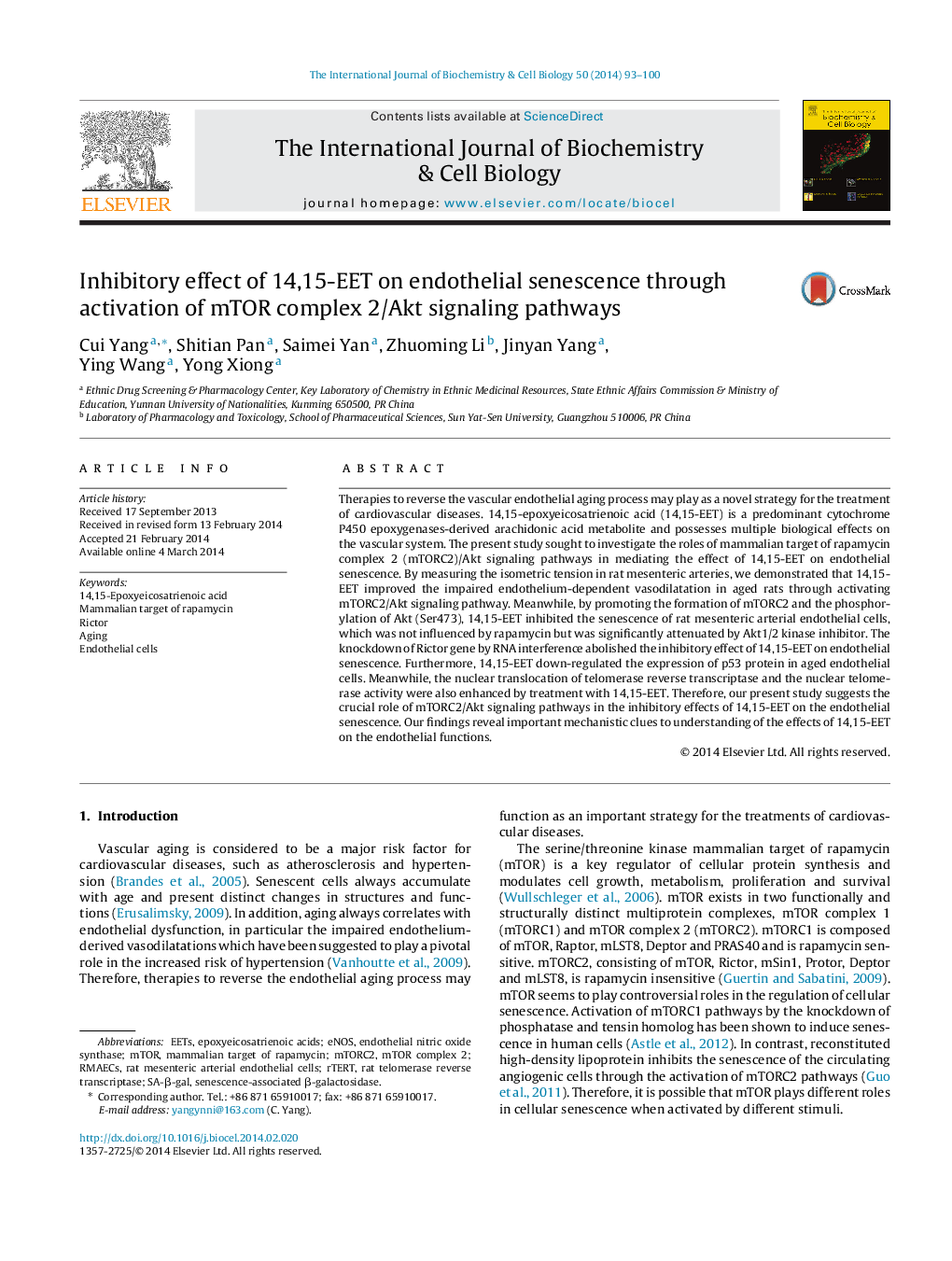| Article ID | Journal | Published Year | Pages | File Type |
|---|---|---|---|---|
| 8323643 | The International Journal of Biochemistry & Cell Biology | 2014 | 8 Pages |
Abstract
Therapies to reverse the vascular endothelial aging process may play as a novel strategy for the treatment of cardiovascular diseases. 14,15-epoxyeicosatrienoic acid (14,15-EET) is a predominant cytochrome P450 epoxygenases-derived arachidonic acid metabolite and possesses multiple biological effects on the vascular system. The present study sought to investigate the roles of mammalian target of rapamycin complex 2 (mTORC2)/Akt signaling pathways in mediating the effect of 14,15-EET on endothelial senescence. By measuring the isometric tension in rat mesenteric arteries, we demonstrated that 14,15-EET improved the impaired endothelium-dependent vasodilatation in aged rats through activating mTORC2/Akt signaling pathway. Meanwhile, by promoting the formation of mTORC2 and the phosphorylation of Akt (Ser473), 14,15-EET inhibited the senescence of rat mesenteric arterial endothelial cells, which was not influenced by rapamycin but was significantly attenuated by Akt1/2 kinase inhibitor. The knockdown of Rictor gene by RNA interference abolished the inhibitory effect of 14,15-EET on endothelial senescence. Furthermore, 14,15-EET down-regulated the expression of p53 protein in aged endothelial cells. Meanwhile, the nuclear translocation of telomerase reverse transcriptase and the nuclear telomerase activity were also enhanced by treatment with 14,15-EET. Therefore, our present study suggests the crucial role of mTORC2/Akt signaling pathways in the inhibitory effects of 14,15-EET on the endothelial senescence. Our findings reveal important mechanistic clues to understanding of the effects of 14,15-EET on the endothelial functions.
Keywords
Related Topics
Life Sciences
Biochemistry, Genetics and Molecular Biology
Biochemistry
Authors
Cui Yang, Shitian Pan, Saimei Yan, Zhuoming Li, Jinyan Yang, Ying Wang, Yong Xiong,
